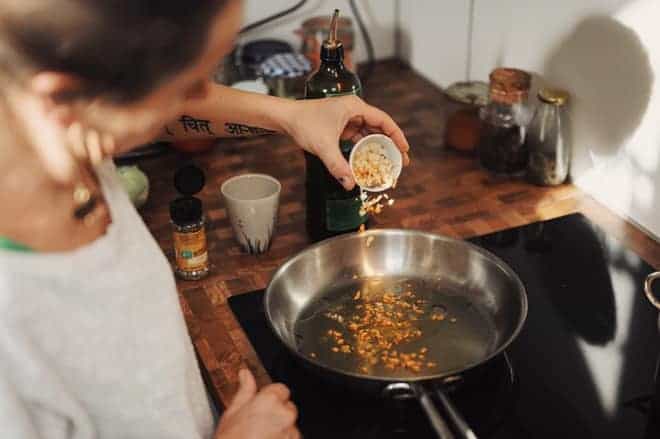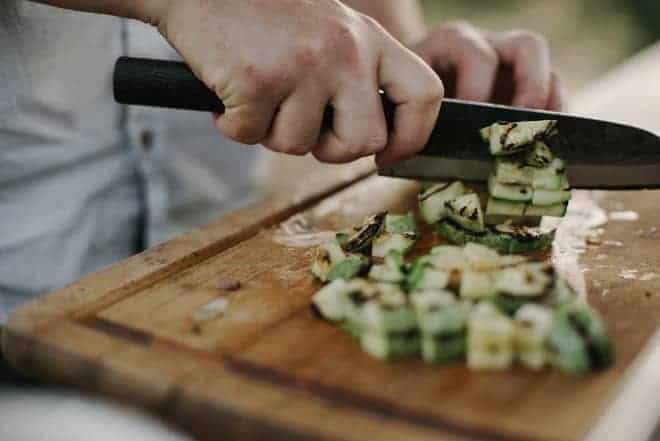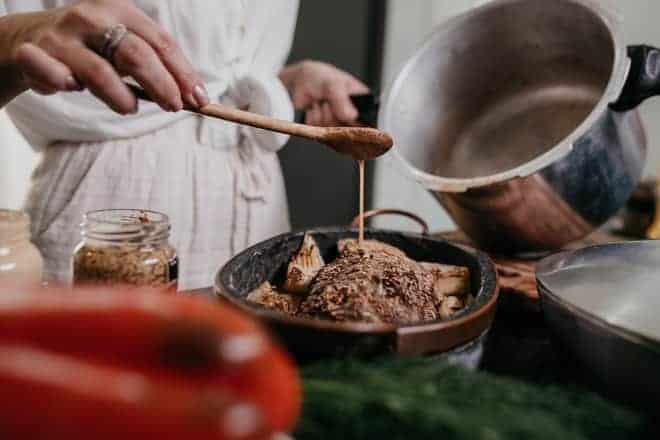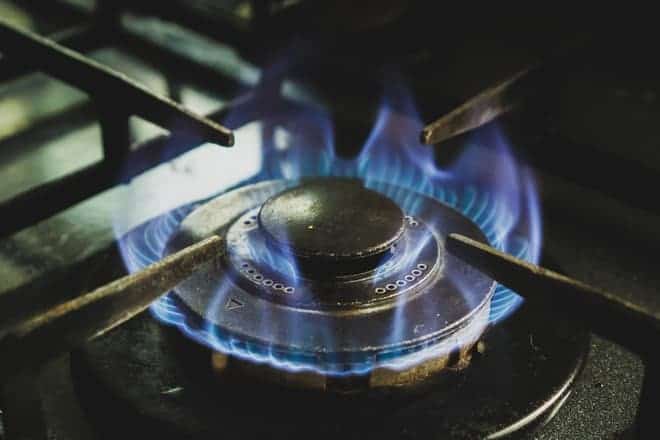Pregnancy often leaves you with no choice but to give up on some of the things you love. From cutting down on your cured meats and unpasteurized cheese to limiting your caffeine intake, you need to make a few major tweaks to your diet.

How about wine, then? Can you cook with wine while pregnant?
Everyone knows that it is a big no-no to drink alcohol throughout your pregnancy. Unfortunately, the rules about using wine for cooking are a bit vague and unclear.
Continue reading to discover whether or not cooking with wine is a good and safe choice for you and your baby alike.
Can Pregnant Women Use Wine for Cooking?
Yes, pregnant women can cook with wine. In fact, it is safe for expectant moms to eat most dishes cooked and prepared with alcohol. This is because most, but not all, methods of cooking significantly reduce the alcohol content. However, some foods contain alcohol, especially desserts, that pregnant women should best avoid.
The longer you cook a dish that contains alcohol, its alcohol content will also be lower. For instance, when you simmer your favorite stew with wine, beer, or cider for 90 minutes to 2 hours, most of its alcohol content will already be burned off. There might still be some remaining traces of alcohol, but the amount may be too low to cause harm to your baby.
What Happens If You Cook with Wine During Pregnancy?
Using wine for cooking focuses more on the flavor and removes most of the alcohol content. Aside from evaporating at room temperature, alcohol also burns off significantly during cooking.
As stated earlier, more alcohol is removed when the cooking time is also longer. However, some alcohol will still remain in the food even after a couple of hours of simmering.
Experts have also discovered that the amount of remaining alcohol is largely dependent on the cooking time and cooking method used.
After alcohol is added to food and it is simmered or baked for 15 minutes, almost half the alcohol content will remain.
After an hour of cooking, only a quarter of the alcohol content will remain.
Even after 2 hours and 30 minutes of cooking, there will still be leftover traces of alcohol in the food. Obviously, the percentage of alcohol in each food serving will be significantly lower.
What Kind of Wine is Used for Cooking?
In general, dry white and red wines are most recommended for many savory dishes. However, whether you choose to cook with white or red wine, make sure you stay away from oaky wines such as Chardonnay or Cabernet Sauvignon. Oaky wines tend to taste bitter when cooked. Meanwhile, sweet wines like Moscato, sweet Riesling, or Sauternes are best used for dessert recipes like poached pears.
Which Cooking Method Removes Most of the Alcohol?
Alcohol is used in many recipes, and different methods of cooking remove varying amounts of alcohol content from the food prepared. This is why it is important to be familiar with these cooking methods as well as the length of time and the alcohol amount removed during the process of cooking.
Boiling
Boiling food refers to the process of cooking foods at high temperatures in liquid or water, and is often used for cooking sturdier food, including starchy vegetables, pasta, or rice.
After food is boiled for half an hour, only around 10% of alcohol remains. Similar to a long simmer, boiling is one of the safest ways to prepare food using alcohol while you are pregnant.
Flambe
Flambe is a method of cooking that involves setting liquor on fire and allowing it to cook until all the flames have completely died down. Since it only takes just a few minutes, it is only natural to expect that the percentage of alcohol remains a bit high.
Most of the time, there is only about 75% alcohol that remains after flambeing. This makes it one of the methods of cooking that leaves the most amount of alcohol in the prepared food.
Simmering
Simmering is a cooking method that involves keeping the food just below boiling and allowing it to bubble until it gets cooked. It is a method that eliminates more than half of the alcohol content. More amounts of alcohol are also removed when it cooks for longer. Once the food has already simmered for approximately 15 minutes, only around 40% of the alcohol content will remain.
More alcohol is removed as time increases. After simmering for one hour, up to 20% of the alcohol will remain, and after two hours of cooking, just 10% of the alcohol will be leftover.
What Non-alcoholic Substitutes for Wine Can You Use for Cooking?
If you love the flavor of wine, the good news is that there are some non-alcoholic substitutes that you can use in wine’s place when cooking. These wine alternatives can make your food equally delicious.
For example, grape juice can be used instead of wine. However, you might have to mix-experiment with some other ingredients so you can find a more effective substitute.
The following are some of the substitutes that you can use in the kitchen when cooking:
- Ginger ale and apple juice can be used in place of white wine.
- Canned mushroom liquid is a great red wine replacement.
- Beef, vegetable, and chicken stock can also come in handy as a substitute for white wine.
- Pomegranate and cranberry juice is good red wine replacement.
- Tomato juice also works as an alternative for red wine. Aside from being a great cooking ingredient, this is also healthy because of its high lycopene content, an antioxidant that lowers the risks of some types of cancer and heart disease.
- While water doesn’t do much in terms of flavor, it adds liquid to recipes, making it a good wine substitute when cooking.
- You can also use wine vinegar for cooking with no major effect on the taste and flavor of recipes. Make sure the water is diluted in water first before you use it for cooking because of its intense acidity.
Cooking with wine while pregnant may be safe as long as you use it with the right cooking method and follow the recommended cooking time.














